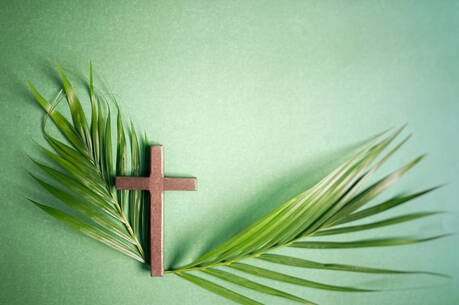A Love Song for God's Vineyard
Frequent question these days is, Just what does it mean to be a Christian? The readings this Sunday and next provide a powerful answer. The Gospels, taken from John 15, use the symbol of the vine and the branches to describe the intimate union between Christ and the believer. This begins with God’s initiative, is sealed by Christ’s death and is expressed in love of God and neighbor, which resounds through the second readings from 1 John. Simply put, to be a Christian is to live united with God in Christ, expressed in love for God and others.
The vine is one of the most powerful biblical images for God’s relation to the people. Israel is the vine brought out of Egypt, and a choice vine planted by God (Ps. 80:8; Jer. 2:21). She is also a vineyard planted and tended by God (Is. 5:1-7; 27:3). Jesus builds on this image by calling himself the true vine and his Father the vine grower. This image is profound, since the vine and the branches (unlike a tree trunk and the limbs) are often virtually indistinguishable, and since there is a mutual interchange of life between them.
John 15 is also characterized by one of the most distinctive Johannine theological concepts, abiding (NAB, remain, also translated as stay), which appears over 40 times in that Gospel. Characteristic of John is that terms from daily lifesuch as remain, light, water, darkness, walktake on profound symbolic meanings, which invite readers constantly to ponder their depth. Early in the Gospel, when Jesus asks the disciples, What do you seek, they counter with Where are you staying? and then stay with him. People brought to Jesus by the Samaritan woman remain with Jesus two days. Discipleship in John begins with brief abiding with Jesus, walks the walk of his life and culminates in the symbol of the branches abiding in the vine.
The union between Christ and the believer is vividly described by Paul and John. Paul speaks over 160 times of being in Christ and uses the metaphor of the body: All the members of the body, though many are one body; so it is with Christ (1 Cor. 12:12). But John’s metaphor suggests a more intimate union. Unlike Paul’s image of the body and its members which is invoked in 1 Corinthians 12 to accommodate the multitude of charisms, the Johannine image of the vine and the branches places emphasis on only one issue: dwelling on the vine or inherence in Jesus (Raymond E. Brown, JBL 97:5-22). Such a close union between Jesus and the believer is not the privileged experience of saints and mystics alone; for John it is the core of Christian life.
The vine must be both nurtured and pruned, symbolizing perhaps the inevitable suffering of the disciples in imitation of Jesus. The vines must bear fruit that will lead to full discipleship, and unfruitful vines wither and are used only for firewood. This reflects the double image of the vine/vineyard in the Old Testament. Despite the tender care the vineyard owner (God) lavished on the vineyard in Isaiah 5, sadly it yields the wild grapes of bloodshed rather than justice, and outcries rather than righteousness. Jesus’ abiding presence is not static but must be nurtured, and it can wither. Not even John’s great vision of the union of God and humanity takes away the mystery of human freedom and the need to grow in responsive love. The reading from 1 John tells us simply what fruit we must bear: Let us love not in word or speech, but in truth and action; and the truth is that whenever our hearts condemn us, God is greater than our hearts.
The Easter season celebrates the abiding presence of the risen Christ. Yet, for Catholics in the United States the readings may seem unrealistic. We are doers, act-ers, and we like quickly to translate the Gospel vision into deeds. John provides us with a profound challengeto stop, to abide with Jesus, to realize God’s presence. Often I think of two human analogies to John’s abiding: one from life in its fullness and one from early life on the brink of growth. For people in a long, loving, fruitful marriage, often mere presence is enough; few words are needed, but when one leaves, even for a short time, the other’s eyes turn frequently to the door. The two have become one fleshand one heart and spirit. This is the Johannine abiding. Last Christmas I watched my 15-year-old grandniece, a young woman of wonderful energy and full of life, yet she could hang out with her best friend, spending hours together, often listening to music, sometimes talking, other times just sitting. Perhaps our culture should learn how to hang out with Jesus.
This article also appeared in print, under the headline “A Love Song for God's Vineyard,” in the May 13, 2000, issue.







